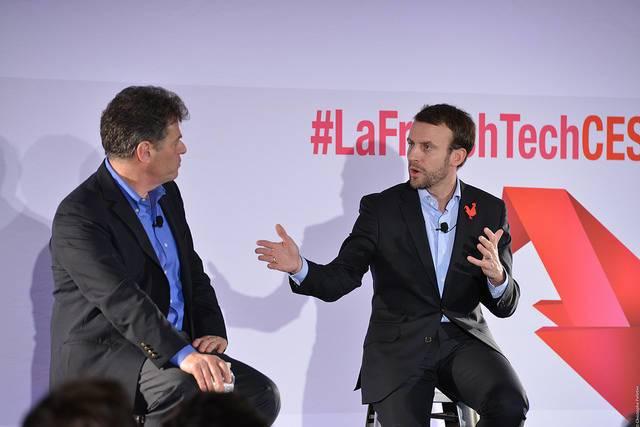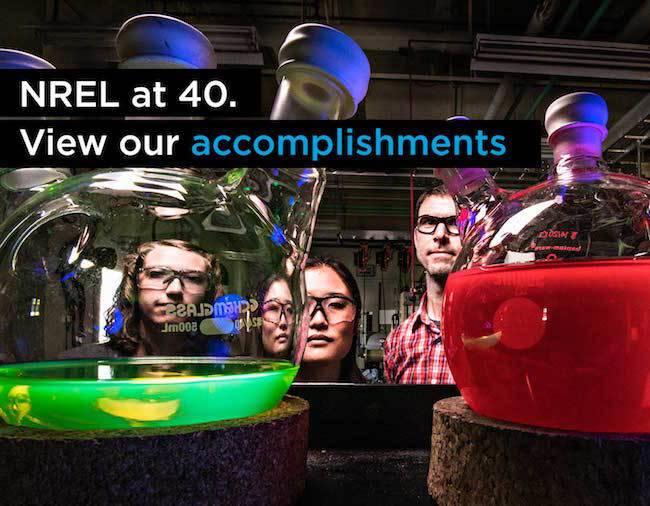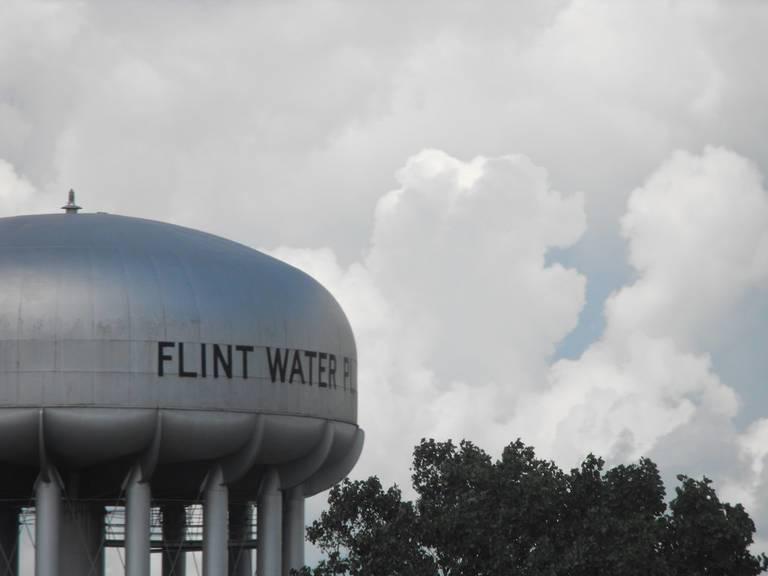Plastic-Free Legos? Toy Giant Seeks Alternative Material for Blocks


“Back in my day, these Legos used to be plastic. Can you believe that?” This may not be too uncommon a phrase for parents in a few decades thanks to a $150 million initiative from the Lego Group. The Danish toymaker says it's looking for a better way to make those plastic building blocks that bring many child architects joy while never failing to appear beneath their parents' feet.
The $150 million -- or 1 billion Danish Krones -- will go toward researching, developing and implementing building blocks made from alternative materials. When the Lego Group announced this groundbreaking initiative, it committed to hiring more than 100 specialists to assist with the project. The Group did, however, clearly articulate that this project won’t be speedy, setting a deadline of 2030.
More than 45 billion Lego pieces were made in 2012, Upworthy reported. The pieces sold were enough to circle the world about 18 times. And Lego runs through more than 6,000 tons of plastic each year. This monstrous carbon footprint moved the Lego Group to take action and change the material of its famous little pieces.
“This is a major step for the Lego Group on our way towards achieving our 2030 ambition on sustainable materials,” Jorgen Vig Knudstorp, former Lego Group CEO and president, said in a 2015 press release. “We have already taken important steps to reduce our carbon footprint and leave a positive impact on the planet...Now we are accelerating our focus on materials.
As NationSwell reported, Americans discard 14.4 million tons of plastic a year while only 13 percent of it gets recycled. Wide-scale efforts to cut back plastic usage and waste are springing up around the world. Grocery stores and local governments have implemented plastic bag fees for shoppers, charging consumers a few coins for every bag they need. The Reduce, Reuse, Recycle campaign brought a much-needed awareness and energy to the sustainability movement.
Yet still, carbon footprints continue to grow. The United States throws away $11.4 billion worth of recyclables away annually, reports the Economist. And more than eight million metric tons of plastic waste finds the world’s oceans each year, reports the New York Times, at a rate that is likely to “increase greatly” in the coming decades.
Lego’s efforts to minimize harm on the environment didn’t begin with its idea to transform its plastic blocks to another material. Lego famously cut ties with Shell, its 50-year partner, after Shell’s plan to drill for oil in the Arctic gained public dissent. Conversely, Lego then established a partnership with the World Wildlife Fund.
Lego’s massive reach of 100 million kids in 140 countries presents the organization with a fantastic opportunity to seek alternative ways to responsibly create the same, fun-loving toy that shaped many of our childhoods. Once the company figures out a new material, maybe it will move to implement a Lego piece that turns soft and squishy when it hits the ground and save bare feet the world over.
Photo by Sonny Abesamis/Flickr
Facebook Cracks Down on Fake Accounts Ahead of French Presidential Election


Will France be the latest domino of the world order to fall as populist anger continues to surge across the West? The polls are tightening with less than a week to go before Sunday’s first-round election, with some surveys suggesting far-left candidate Jean-Luc Mélenchon has suddenly come from nowhere and is not far behind the frontrunners, far-right firebrand Marine Le Pen and centrist Emmanuel Macron.
To that end, some fear that purveyors of fake news -- in a fashion similar to what erupted last year during the U.S. presidential election -- could tilt campaigns first in France and later this year in Germany. Earlier this month, the German cabinet approved a law that would fine social media companies up to US$53 million if they fail to quickly remove fake news postings touting racist or other hateful content from their sites.
While technology companies claim Germany’s law is far too onerous and threatens free speech, they also realize that becoming more proactive and taking action can keep the regulators at bay. Hence last week, Facebook adopted stronger measures against fake accounts, which are often the culprits behind the proliferation of fake news, in addition to what critics have been quick to describe as hate speech.
Shabnam Shaik, a technical program manager with Facebook, said the result was the removal of over 30,000 fake accounts within France.
Facebook says it has implemented technology that allows the company to identify bogus accounts quickly, while stopping deceptive content that can often spread virally across the Internet and social media channels.
“We’ve made improvements to recognize these inauthentic accounts more easily by identifying patterns of activity,” Shaik wrote, “without assessing the content itself. For example, our systems may detect repeated posting of the same content, or an increase in messages sent.”
And on Friday, Facebook announced that after a six-month operation, its engineers disrupted a huge spam operation that spanned countries such as Saudi Arabia, Bangladesh and Indonesia. Those accounts issued an onslaught of “fake likes” and comments using redirecting technologies, such as proxy servers, to mask their actual location.
In the past, the Silicon Valley giant also claimed to have developed mechanisms that stop fraudulent activity, including those pesky fake likes -- which, of course, can give postings an air of authenticity. In layperson’s terms, Facebook is continuing to roll out programs, including automated detection, which the company insists can compare the activity of real human beings to fake accounts, which can post or generate likes at a far more rapid and ridiculous pace than that of a real person.
Facebook made it clear that its attempts to weed out fake account activity will never be perfect, and some analysts were quick to agree -- and even described the company’s reaction as pallid at best.
In an op-ed for NBC News, technology writer Nikita Biryukov said that such moves by Facebook and other social media companies were unlikely to make much of a dent in what can be described as the global spam industry. In the underworld markets of fake social media accounts, such changes in security could even drive up the prices of generating fake accounts, Biryukov argued.
“A pinprick,” Biryokov tweeted on Monday in response to Facebook claims that this fake account purge could help maintain the integrity of France’s elections. “A drop in the ocean,” chimed in Mariella Moon of the tech blog Engadget, noting that Facebook has amassed almost 1.9 billion accounts to date.
Meanwhile, some outlets, including the BBC, are attempting to fact-check fake news accusations that have dogged both Le Pen and Macron.
Image credit: Business France/Flickr
Carbon tax adopted by Singapore


By Brian Collett — Singapore is to become the first nation in south-east Asia to introduce a carbon tax.
The decision represents a reversal of the policy of a few years ago when the government rejected carbon taxation.
The measure, due to take effect from 2019, will demand between S$10 and S$20 ($7.15-$14.30, £5.70-£11.40, €6.70-€13.40) for every tonne of greenhouse gas emitted.
Although the levy is being called a carbon tax, the same charge will apply to methane, nitrous oxide, hydrofluorocarbons, perfluorocarbons and sulphur hexafluoride.
Singapore has 40 to 50 heavy polluters, including oil refineries run by Royal Dutch Shell and ExxonMobil.
Leonard Ong, tax partner at the international business consultancy KPMG, called the proposal “a step in the right direction for Singapore”.
He said: “With carbon emissions issues becoming of increasing concern, it is only right that Singapore, as a responsible global city, should take the lead in this region and aim to avoid an excessive carbon footprint.”
Observers point out that Singapore, with a population of just over five million, is responsible for only 0.11 per cent of global emissions. However, the significance is that, if Singapore shows that a rich nation can compete and grow while tackling climate change, the example to world will be invaluable.
Responsible business practice in Singapore could be a particular example to neighbours such as fast-growing Indonesia and oil-producing Malaysia.
Why has the city state done a U-turn? The big factor seems to be an awareness of the risk of the surrounding rising sea levels caused by climate change. And, of course, Singapore made commitments during the 2015 Paris climate change conference.
Thinking About a Corporate Wastewater Program? What You Need to Know


Less than 3 percent of the Earth’s water is drinkable, and only 0.30 percent of that freshwater is readily accessible. And the one-two punch of climate change and a rapidly growing population has resulted in water scarcity around the world.
In addition to the environmental and social impacts, there is an economic case for being far more judicious about how water is used and treated. The World Bank, for example, estimates that water scarcity could cost some regions as much as 6 percent of GDP – and droughts will wreak havoc on developed and developing nations alike.
As this perfect storm brews, companies that invest in wastewater treatment and recycling will find they can enhance their bottom line. In addition, these forward-looking companies can gain the trust of local communities, especially if their operations are located in areas at risk of drought and water scarcity.
Corporate water programs vary by location and company, as the complexity of water does not allow for any one-size-fits-all approach. TriplePundit profiled two companies with very different business models. One is among the most recognized clothing brands on earth; the other is well known for its breakfast cereals and other marquee food brands.
General Mills looks to employees to boost water stewardship
For General Mills, flexibility is key as the food giant continues to tackle its water program, which hinges on the management of wastewater.
“Water is very location-specific,” Jeff Hanratty, applied sustainability manager at General Mills, told TriplePundit. “So wastewater is complicated, as it depends on the product involved and the local regulatory environment. Then there are logistics: Some large cities in which we operate, like Los Angeles, can handle [the company's water footprint]. But in a city like Reed City, Michigan, where our plant uses a lot of the local water supply, it’s a different story.”
And as each plant within General Mills’ operations is different, whether it mills flour or cultures yogurt, Hanratty explained that best ideas for wastewater treatment often emerge at the local level. “In many cases, it all gets started with a champion at a plant,” he told 3p. “Someone at a plant may have a passion for sustainability, or thinks of a creative idea for water reuse. And it often begins with a problem – perhaps we can’t just discharge into the local sewage treatment system, or the way the plant has been running is too expensive.”
While the company makes it clear that its executive team is open to ideas, General Mills is a publicly-owned company accountable to shareholders. So, a wastewater project must ensure 100 percent compliance and show a return on investment. “Any time we launch such a project, we need a payback,” Hanratty said bluntly.
One example of General Mills turning wastewater into a resource can be found at its Greek yogurt plant in Murfreesboro, Tennessee.
Greek yogurt has become popular, and profitable, in recent years, but it takes three gallons of milk to create one gallon of Greek yogurt. (Regular yogurt, in turn, requires a gallon of milk per gallon of yogurt.) The result is massive amounts of whey, which until two years ago was trucked and spread onto local farmland at the rate of at least 15 truckloads a day.
But since August 2015, that leftover whey has been processed in an anaerobic digester, which generates methane biogas providing 10 percent of the plant’s electricity requirements. Excess heat from the system is redistributed across the Murfreesboro plant, reducing its natural gas needs by 10 percent. As a result, the plant saves $2.4 million in energy costs annually, while preventing 9,000 metric tons of emissions from entering the atmosphere.
“Another benefit from this system is that, after that water is treated, it’s then used by a local golf course, which means [the golf course] is no longer putting pressure on the local aquifer,” Hanratty added.
General Mills has retrofitted other plants to capture waste heat from water in Covington, Georgia, and Cedar Rapids, Iowa. But again, each plant requires a tailored solution for wastewater, while energy-efficiency solutions can scale across the company at a much faster rate.
“With energy, you can do a boiler project at half of the plants; after all, saving carbon in Cincinnati is just as good as saving energy in China,” Hanratty told us. “Water, however, is a much more complex story.”
Levi Strauss & Co. pushes for an industry-wide wastewater standard
Water is also complicated for Levi Strauss & Co. As is the case with many apparel companies, much of its water footprint occurs early in its supply chain and the company does not own the factories where its garments are manufactured. That means addressing water management requires industry cooperation, as there is only so much control Levi's can exact on its suppliers.
“One of the biggest challenges is the fact that we don’t own most of the factories making our products, which means we share factories with other brands, including smaller, local brands, who may not have the same high standards when it comes to wastewater,” said Michael Kobori, vice president of sustainability for Levi Strauss & Co. “This also means our leverage with the factory owners can be diluted, especially if we don’t make up the majority of their business.”
Levi Strauss hoped to address this problem by collaborating on a new industry-wide wastewater standard with the Zero Discharge of Hazardous Chemicals group, or ZDHC. By implementing standards at an industry level, the company claims this effort could drive more sustainable change, including in regions where the company has no manufacturing presence.
But Levi Strauss is hardly passing the buck, as it insists it is working with suppliers to improve their wastewater performance. Levi's sourcing team in north Asia partnered with one of its vendors, Crystal, to boost its recycled water program. In the past, Crystal dedicated some of its industrial laundry machines to only use 100 percent recycled water – but that policy imposed limitations on the types of products it could put in the machines without having any affect on its fabrics’ quality.
To that end, Crystal recently agreed to upgrade its equipment and piping systems so the company’s machines could use various ratios of recycled and freshwater (such as 75 percent recycled and 25 percent freshwater versus 100 percent recycled). As a result, the company dramatically increased the amount of recycled water used in the manufacture of Levi Strauss garments by increasing the range of products that could be made with some portion of recycled water. “It’s also a great example because this work was initiated by our sourcing team, not our sustainability team, which shows how Levi Strauss & Co. is embedding sustainability throughout the business,” Kobori said.
For a company with products manufactured across an outsourced supply chain, not within its internal operations, having a clearly outlined policy on wastewater is a start. One could say Levi Strauss' approach is like the carrot and stick method. The company issued what it calls global effluent guidelines. From Levi Strauss & Co's point of view, this policy involves many carrots. Suppliers that follow these guidelines will benefit by cutting costs, while eliminating many reputational risks -- and, in the end, attracting even more business.
And the stick? The risk of losing business to another vendor that agrees to follow these standards. “This is an investment that our suppliers must make if they want to do business with us as a global leader on sustainability,” Kobori insisted. “More progressive vendors are willing to make this investment to be more cost competitive and more attractive to global brand customers."
The bottom line
While their business models and industries are vastly different, the common thread Levi Strauss and General Mills share on wastewater treatment is the spirit of cooperation.
Directives on wastewater treatment cannot just follow a top-down approach; partnerships between corporate executives and those who work day-to-day on the shop floor are crucial if a company hopes to succeed in reducing its water footprint.
Image credits: 1) General Mills/Flickr; 2) Levi Strauss & Co./Unzipped Blog
NAACP: Access to Electricity Is a Human Right


Electricity is a big part of our lives. We use it to heat and cool our homes, store and cook our food, and run our businesses. Electricity is vital to our health, safety and financial wellbeing.
That’s why advocacy groups, including now the National Association for the Advancement of Colored People (NAACP), are calling for access to electricity to be classified as a human right.
NAACP report
A new report from the NAACP’s Environmental and Climate Justice Program lays out ideas for ensuring uninterrupted access to electricity. The authors assert that, although the government has the power to regulate utilities for “the public interest,” the effectiveness of that power is limited by what the definition of “public interest” is.The report, issued in March 2017 and entitled Lights Out in the Cold: Reforming Utility Shut-Off Policies as If Human Rights Matter, urges legislators to amend the legal definition of the phrase to include access to electricity as a human right and account for issues such as racial discrimination, poverty and climate change.
The NAACP called on states to implement rules prohibiting shutoff during times of extreme temperatures, protections for those who use electricity to operate vital medical devices, programs to assist customers struggling to pay their bills, and programs to assist with energy-efficiency improvements. The group also advocated for more clean and distributed power generation.
Access to electricity as social justice
The NAACP report demonstrates how electricity shutoffs are more likely to affect low-income populations, the elderly and communities of color. This, the organization says, makes electricity a social justice issue.
According to data from the U.S. Energy Information Administration (EIA), households at or below 150 percent of the poverty level and headed by African Americans were twice as likely to have their power shut off as households at the same poverty level headed by white Americans.
The role of climate change
The NAACP also notes that climate change will likely continue to make the situation worse. As global warming intensifies, temperatures are expected to be more extreme and severe weather events more common.
These problems will disproportionately affect low-income and minority communities. As electricity bills rise due to an increased demand for heating and cooling, families will find they need to spend a larger chunk of their income on electricity. Poor communities will struggle to rebuild after extreme weather events.
In poorer areas of cities, temperatures tend to be higher to begin with. This isn’t just an electricity affordability issue; other factors play a part, such as fewer trees to provide shade and buildings that are constructed of heat-trapping materials. Furthermore, residents of these communities are more likely to work outside in the elements during the day. If they come home to hot apartments that they can’t afford to cool with air conditioning, they are more likely to suffer from heat-related health problems.
Other organizations speak out
The NAACP isn’t alone in calling for equal access to electricity. Other organizations, including WE Act for Environmental Justice and the Center for Economic and Social Rights, agree with NAACP’s conclusion.
Businesses, too, have begun to take steps to improve access to electricity. Grid Alternatives, a California-based nonprofit organization, works to provide and install rooftop solar panels for low-income households. And Schneider Electric is installing solar panels in Kenya that provide off-grid power.
Solar technology can be expensive to install, but once it’s up and running, it can lower the cost of utility bills. Apart from finding alternative energy solutions, property management companies, such as PMI, work with affordable properties participating in government programs to help lower-income families find affordable rent and utility rates.
Electricity is central to our daily lives. It’s hard for some of us to imagine living without it. And the NAACP and other human rights organizations say no one should. Access to electricity is not defined as a human right in the United States today. But declaring it as such would likely help keep disadvantaged communities safer and healthier and would help them achieve more financial security.
Image via: Pexels
Trump Administration on Board with Solar-Powered Renewable Hydrogen


President Donald Trump may talk a good talk for American coal miners, but his administration is still powering along on the renewable energy course charted by his predecessors in the White House. In one of the latest developments, the Department of Energy's National Renewable Energy Laboratory is enthusing over the results of two new high-efficiency breakthroughs that leverage solar energy to "split" hydrogen from water.
That's just two examples. NREL is celebrating its 40th anniversary this year. The lab -- and, by extension, the Trump administration -- is using the occasion to showcase the current state of its numerous renewable energy research initiatives, the result of continued investment through multiple Democratic and Republican administrations.
Solar powered hydrogen production: Part I
Renewable hydrogen is the key to unlocking the power of the hydrogen economy. Hydrogen is an abundant, zero-emission fuel. And energy enthusiasts have long dreamed of harnessing it for widespread use to replace coal and other fossil fuels.
The problem is that the primary source of hydrogen fuel is still fossil energy, specifically natural gas.
That is beginning to change. Researchers are looking at renewable biogas for hydrogen production, and "water-splitting" powered by solar cells or wind energy is also a focus of alternative hydrogen production.
NREL's latest contribution to the solar water-splitting field is a big one.
The lab has achieved proof-of-principle for a new solar cell that can capture excess energy that is normally vented as waste heat.
Specifically, the new device is a photo-electrochemical cell that can "push the peak external quantum efficiency for hydrogen generation to 114 percent."
As described by NREL, the new cell leverages a process called multiple exciton generation (MEG) to arrive at the seemingly impossible feat of surpassing 100 percent efficiency.
MEG enables the solar cell to produce extra electrons, surpassing the amount that enter it. Here's the explainer from NREL:
"The maximum theoretical efficiency of a solar cell is limited by how much photon energy can be converted into usable electrical energy, with photon energy in excess of the semiconductor absorption bandedge lost to heat. The MEG process takes advantages of the additional photon energy to generate more electrons and thus additional chemical or electrical potential, rather than generating heat."
Instead of transferring the electrons to an electrical current, the solar cell stores the MEG-enhanced electrons in a chemical bond, namely, hydorgen.
For those of you keeping score at home, the chemical aspect of the new cell explains why it's called a photo-electrochemical cell. Solar cells that convert sunlight to an electrical current are called photovoltaic cells.
Solar powered hydrogen production: Part II
Also in the photo-electrochemical field, another team of NREL researchers has nailed the record for achieving the highest efficiency level for solar powered water-splitting.
For its new photo-electrochemical cell, the team "grew" a new semiconductor material in a specialized reactor. The new cell hit the mark of 16.2 percent, significantly higher than the next-highest efficiency level of 14 percent achieved by an international team back in 2015.
Aside from giving NREL bragging rights to a new world record, the new cell has the potential to lower the cost of renewable hydrogen.
The team also demonstrates the value of long-term federal investment in foundational research. The roots of the new cell go all the way back to a concept device NREL developed in the 1990s.
Coal under the bus
President Trump flipped on several key campaign promises in just one week, and the chances for him to make good on his oft-repeated promise to bring back coal jobs are also flattening out to near zero.
To a great extent, the pressure on coal is coming from cheap natural gas, and the Trump administration has a built-in advocate for natural gas in newly-minted Secretary of State Rex Tillerson, the former head of ExxonMobil.
ExxonMobil is typically known for its oil operations. But under Tillerson's leadership, the company embarked on a concerted effort to grow its natural gas business in the U.S. and globally -- specifically at the expense of coal.
The coal industry has no such internal voice in the Trump administration, despite Trump's promises.
Until recent years, renewable energy has played a much smaller role in the demise of coal here in the U.S. That's about to change as renewable energy technology improves and costs come down.
As with natural gas, renewables also have a strong advocate in the White House. Energy Secretary Rick Perry has espoused some dicey viewpoints on social issues. But as the former governor of Texas, he shepherded the state into a renewable energy leadership role that includes solar, biofuel and advanced energy storage as well as a heavy dose of wind power.
Secretary Perry has continued to pitch renewables through the Energy Department's news releases and social media, and through his own Twitter feed.
Apparently the secretary received orders from the Trump administration to withhold U.S. endorsement from an important G-7 climate declaration last week. But Perry's public statement on his meeting with G-7 leaders included a not-so-subtle pitch for renewable energy:
"I discussed with my fellow ministers that the Trump administration believes that economic growth and the environment can successfully go hand-in-hand," Perry said."An example of this success is my experience as a governor when we made good policy decisions that grew our economy, and added 4 million new residents to my state. At the same time, we reduced our emissions and improved our environment."
Perry went on to throw a bone to coal, but only in the context of developing advanced nuclear energy and "high efficiency, low-emission" natural gas, too.
He also emphasized a finding by the International Energy Agency favoring natural gas:
"The IEA also shared the major impact that natural gas, including U.S. [liquified natural gas] exports, will have on energy security and environmental quality. This will benefit consumers."
These lines hammered another nail in the coal coffin:
"Innovation is also a top priority for the Trump administration. We are committed to developing, deploying and commercializing breakthrough technologies and developing the necessary policies that will help renewables become competitive with traditional sources of energy."
Perry's remarks were aimed at the global energy marketplace with the ultimate effect of dampening export potentials for the U.S. coal industry as well as fostering the continued downward slide of domestic consumption.
It appears that the Trump administration has an awfully funny way of bringing back coal jobs.
On the other hand, if President Trump makes a slight grammatical revision in his campaign promise -- that is, bringing back jobs for coal miners -- he could look to the explosive growth of employment in renewable energy, energy efficiency and related fields for a leg up.
Photo: via NREL.
Seattle Baseball Fans Can’t Get Enough Toasted Grasshoppers


One would think the reaction of baseball fans upon hearing that their team’s stadium is selling grasshoppers in the concession stands would be “ick” – or crickets, as manifested in a quiet food stand hidden behind the cheap seats.
But that's not the case in Seattle, where crowds at Safeco Field reportedly cannot get enough of the toasted critters. The mad rush pushed the restaurant managing the stand to place an emergency order to meet demand – and now it's limiting the number of orders that will be sold during each ballgame.
The dish that is creating buzz -- or, should we say, a loud chirp -- is chapulines: a species of grasshopper that is popular in several regions across Mexico. They have long been a mainstay in Oaxaca, where they are served in tortillas or as a side dish. Sold on the street and at sporting events, chapulines are catching on with foodies because of their savory crunch. Often seasoned with chili, citrus and salt, think of their taste as akin to potato chips, only with a satisfying yeast- and toast-like flavor.
The Mariners sold over 900 orders of this treat during three games, which equates to about 13 pounds or 18,000 grasshoppers, ESPN reported last week. Over the weekend, the team limited the amount of orders to 312 a game, a nod to the Mariners’ team legend, Eddie Martinez, who had a batting average of .312 during his career.
The team was soon overwhelmed with calls from enterprising food vendors asking if other bugs will end up on Safeco Field’s menu, ESPN's Darren Rovell reported. For now, however, the team is limiting that section of the menu to the chapulines.
The mad rush was a public-relations bonanza for the restaurant behind the fast success. Poquitos, which runs its flagship location in the popular Pike Street Market in downtown Seattle, has been profiled all over the Internet, with publications such as Food & Wine Magazine showcasing the dish.
Interestingly enough, in an era when ballpark food is often fussy and expensive, this four-ounce dish of crunchy treats is only $4. Contrast that price with the legendary Dodger Dog in Los Angeles, which now sets fans back $10 a wiener. And for Poquitos, as well as Centerplate, Safeco Field’s concessions manager, the reception overall has been positive – one writer on Forbes said this delicacy must be tried not over a dare, but because chapulines are pretty darned good and pair well with a cold beer or shot of tequila.
Foodies aren't the only ones who will want to score a sample, but so would fans who are watching their carbs or have gone ketogenic. A 100-gram portion of chapulines offers 14 grams of protein, 5 grams of fat, 20 percent of the recommended daily intake of calcium and 25 percent of the daily recommended consumption of iron – plus a healthy dose of vitamins A and C and no cholesterol. Contrast that with chicken breast, which is rich in protein, but has 104 milligrams of cholesterol, no vitamins, a trace amount of minerals and, of course, a much larger environmental footprint.
So if insects can catch on with sports fans, could ants, caterpillars and other six-legged creatures start appearing at ballparks and stadiums? After all, about 2 billion people consume insects as a protein source on a regular basis worldwide.
In Western countries, however, culinary entomology, according to the blogs, is limited to French (no surprise here) chocolate covered ants and a few token lollipops. Sure, you can buy some products such as high-protein cricket powder on Amazon, but the environmental benefits of eating bugs have not quite yet meshed with human psychology in this hemisphere.
The United Nations suggested several years back that the consumption of bugs would be necessary to feed a hungry world. But when I posted a story about that report for a company in a Middle Eastern oil state a few years ago, the outcry and gross-out factor reached such a crescendo that the chairman became irritated over the commotion, and the post was removed the next day.
But as the world rapidly grows to what could be a population of 9 billion by 2050, the evidence suggests pastureland and soy farms will not raise and grow enough to feed the world. The confluence of hipster culture, sports and Instagram may create just enough spark to make insects mainstream.
Image credit: César Rincón/Flickr
Lessons From Flint: Why We Miscalculate Investments


By Shubha Kumar
What was the grand total cost of the water crisis in Flint, Michigan? One straightforward and common measurement, used by the city itself, would account for the expense of replacing the infrastructure: an estimated investment in over 6,000 water pipes.
Retroactively, however, it’s easy to view headlines and understand avoiding this situation would have saved the city on a seemingly endless list of consequential costs, including 12 deaths, the felony convictions of government employees, lifetime birth defects from lead poisoning, and the hygienic health effects of residents too scared to use their water.
Ironically, the grave miscalculation to switch water systems in Flint centered around the desire to save money.
Michigan Attorney General Bill Schuette voiced his explanation for this error during a Flint press conference, saying: “This fixation [on money] has cost lives. This fixation came at the expense of protecting the health and safety of Flint. … It’s all about numbers over people, money over health.”
Flint, however, is far from the only government or business to miscalculate the return-on-investment of a new program, policy, or organizational investment. History is littered with stories where the desire to earn or save money has led to investments going over-budget and time.
Famous PR disasters share stories of the slew of social, economic, and environmental consequences that are hard to calculate. Whether the Big Dig or Western Union passing over the patent for the telephone, everyday for-profit and nonprofit business and organizational decisions are often made with a cost-benefit analysis (CBS) and met with far more complex results than monetary difference. Whether or not an investment makes headlines, hidden costs and impacts could arguably affect the return-on-investment (ROI) of organizational initiatives with each decision made.
An innovative framework for calculating ROI, called social return on investment (SROI) analysis, may be a more productive tool for evaluating new investments such as clean water access. Initially used to measure the results of social enterprises, SROI is gaining ground across diverse sectors, especially in the international development and global health arenas. SROI provides a useful tool to calculate complex investments such as water infrastructure and provides a more holistic picture of sustainable impacts.
By definition, SROI analysis is a process for understanding, measuring and reporting on the social, environmental, and economic value (otherwise known as the triple bottom line) of an organization, program or policy. One of the key differences compared to the CBA is the involvement of stakeholders in the analysis process. By incorporating stakeholders across relevant organizations and teams, a more encompassing picture of varying values, cost factors and end goals appear.
Continuing with clean drinking water as a case study, investment in water infrastructure typically involves cost and impact across the triple bottom line of social, environmental and economic values.
Whether in Michigan or in less developed locations around the world, we can observe the innumerable costs of a lack of access to clean drinking water across these three areas. Impacts can include the obvious health effects, but also far-reaching and complex implications, including time spent collecting water, sanitation consequences, lost school and work days, increased poverty levels, the list goes on. Often, these results are compounded in already economically challenged areas.
In the case of Flint, the cost to replace pipelines burdened a state already massively in debt. Of course, underdeveloped international areas often face additional consequences, where the lack of access to water is often caused by the inability to invest in infrastructure and compounds economic issues such as farming, production, energy, food and more.
SROI analysis provides a critical tool to assist in preventing or addressing such water crises. In a largely impactful investment like water infrastructure, the SROI framework includes input from key stakeholders, including intended beneficiaries, governments, NGOs, corporations, donors, investors, and more. As a mixed methods and participatory approach, a final SROI report includes quantitative, qualitative, and financial information upon which to base decisions. Compared to a cost-benefit analysis, SROI is holistic enough to capture the various costs and benefits of clean water access and also a common language for communicating impact across the stakeholders.
Carried out during the planning stage of a clean water investment, or as an evaluation method for past projects, the SROI framework can include additional triple bottom line measurements, costs and demonstrate the wide-ranging values of an investment. As a result, use of SROI analysis for water infrastructure investments can:
- Demonstrate wider values correlated to contributions
- Attract funding and achieve greater buy-in to share costs
- Strengthen communication, accountability and relationships for stakeholders
- Reveal insights and potentially unintended consequences
- Promote improved implementation and opportunity for success
- Create a common language between private and social sectors
Overall, SROI changes the game of what gets measured and, therefore, what gets valued. Personally, I have seen an SROI framework lead to successful design and oversight of several programs beyond water, including, healthcare systems, disaster relief, and education initiatives. For example, as COO for an international humanitarian NGO, I saw SROI analysis provide a critical gateway to the strengthening of emergency medical systems in sub-Saharan Africa.
Here, an SROI analysis extended the investment of staffed ambulances by not only including the value of lives saved but also including the value of correlated debt of disability cases, skills acquired through medical training, and patient welfare spending. We were able to identify an allocation of resources that would provide the most bang for our buck, in staffing and upgrading ambulances that already existed as well as implementing new technology to facilitate coordination between key constituents.
Whether assessing the investment opportunity of a new water pipeline, adding medical services in underserved areas, or perhaps, someday, a technology investment in the boardroom, SROI encourages accountability, transparency and sustainability in decisions that extend beyond the mere dollar amount. While not an exact science, SROI provides a more complete view of what should be valued and acts as a systematic measurement tool to incorporate a holistic perspective into an economic investment.
Image credit: Flickr/Ben Gordon
Shubha Kumar, Ph.D., MPH, is Assistant Professor of Clinical Preventive Medicine and Director of the Online Master of Public Health Program at the Keck School of Medicine, University of Southern California.
Communities thrive when corporations thrive


UK citizens among WEF’s “Young Global Leaders”

